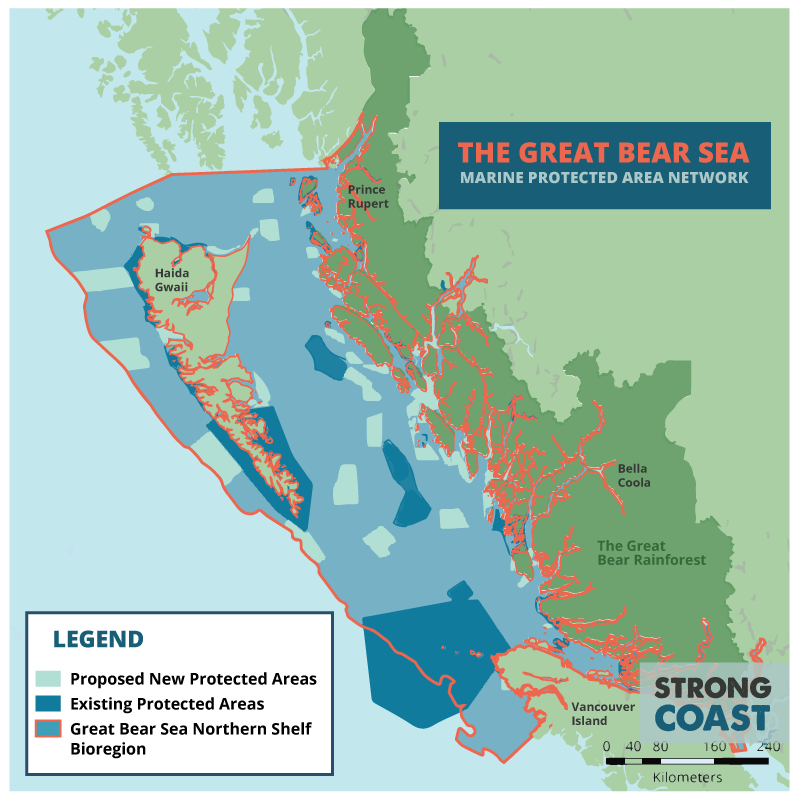
The only live coral reef in Pacific Canada, recently discovered off of BC’s central coast, is now protected for future generations. Fisheries and Oceans Canada (DFO) just announced a ban on all commercial and recreational bottom-contact fishing in the area around the rare Lophelia coral reef, located in Finlayson Channel, about 500 kilometres northwest of Vancouver.
“You light it up, and you realize you’re the first person to ever see this: beautiful pinks, purples, yellows, crevasses, and mounts. And once you see past the corals, you realize that there are other animals on them.”
Cherisse Du Preez, Deep Sea Ecologist at Fisheries and Oceans Canada (DFO)
The cold-water coral reef recently discovered and protected in the Great Bear Rainforest 🪸🐟🧽🪸🧽🐟🪸
— Dr Cherisse Du Preez 🪸🐙 (@CherisseDuPreez) March 15, 2024
🎥 The 2021 discovery dive pic.twitter.com/eHjr0EOKI6
The remarkable find all began with a tip from the Heiltsuk First Nation, who had noticed a ‘bump’ in the sea floor. They had always suspected that something deep in their waters was supporting a healthy fish population.
Following this lead, in 2021, a collaborative mission between (DFO), the Kitasoo / Xai’xais First Nation, and the Central Coast Indigenous Resource Alliance (CCIRA) uncovered and subsequently mapped the reef.
DFO deep sea ecologist Cherisse Du Preez was on board a submersible 200 metres below the ocean’s surface when she and her team uncovered one of the most unique ecosystems on earth. “You light it up, and you realize you’re the first person ever to see this: beautiful pinks, purples, yellows, crevasses, and mounts. And once you see past the corals, you realize that there are other animals on them,” Du Preez told the Canadian Press.
“Then the movement starts, and you start to see the eels, the octopus, or the rockfish swimming in and out. And even when we tilt the camera up, you can see the schools of fish on top. Everywhere you look, there is life,” she said.
The reef, home to rare species like glass sponges, supports the entire ecosystem, acting as a nursery, refuge, and feeding ground, boosting biodiversity, species abundance, and overall productivity. Du Preez notes that the one-of-a-kind Lophelia reef will soon be as iconic to BC’s coast as herring, spirit bears, or sea wolves are.
Unfortunately, the remote coral reef has not been untouched by human impact. Scientists found evidence of damage due to destructive fishing practices like midwater trawling. As of February 14th of this year, DFO announced all recreational and commercial bottom-contact fishing is restricted in the area to preserve the fragile ecosystem.
“It’s a very big concern, and that’s one of the reasons why it’s so important to stop fishing in this area is because we have to take away all the stresses we can to give this reef an opportunity to survive the changes that we can’t control.”
Cherisse Du Preez, Deep Sea Ecologist at Fisheries and Oceans Canada (DFO)
Du Preez also points to climate change as a contributing factor to the dead coral reefs found in the Channel’s waters. “It’s a very big concern, and that’s one of the reasons why it’s so important to stop fishing in this area is because we have to take away all the stresses we can to give this reef an opportunity to survive the changes that we can’t control,” she said.

The coral reef is located within the Northern Shelf Bioregion, which extends from northern Vancouver Island to the Canadian-Alaskan border. This region is the proposed location for a Marine Protected Area (MPA) Network dedicated to protecting 30% of the Great Bear Sea from overfishing, destructive fishing practices, such as dragging, and pollutants to promote more productive marine habitats.
The region is also currently under review to become a National Marine Conservation Area Reserve (NMCAR), an area subject to one or more Indigenous land claims, according to Parks Canada. Central Coast Nations say they are currently assessing, alongside Parks Canada and the BC government, if a Reserve is the “best way to successfully implement a Marine Protected Area on our coast.”
“The strong collaboration between First Nations and the federal government, where Indigenous knowledge harmoniously intertwines with scientific methods, has unveiled a remarkable ecosystem.”
Douglas Neasloss, Chief Councilor of the Kitasoo / Xai’xais First Nation
The Lophelia reef – also known by its Wakashan name q̓áuc̓íwísuxv – holds ecological and cultural significance for both the Heiltsuk and the Kitasoo / Xai’xais First Nations. “The strong collaboration between First Nations and the federal government, where Indigenous knowledge harmoniously intertwines with scientific methods, has unveiled a remarkable ecosystem,” said Douglas Neasloss, Chief Councilor of the Kitasoo / Xai’xais First Nation, in a statement.
“Given the challenges posed by climate change and management uncertainties, we eagerly anticipate further cooperation with our crown partners through the MPA Network Action Plan to preserve other ecologically and culturally significant regions,” he commented.
Published with permission from The Skeena.




